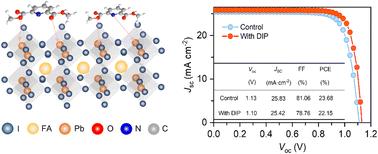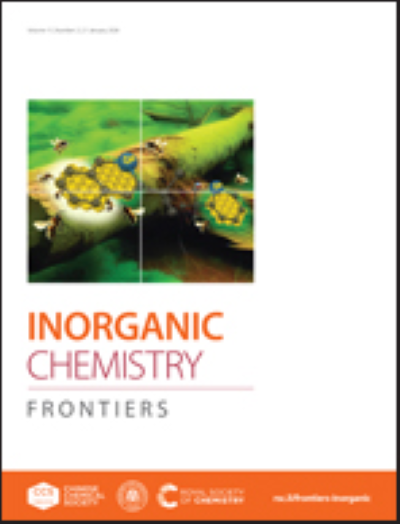Multidentate chelation via pyridine-based molecules for high-efficiency perovskite solar cells
IF 6.1
1区 化学
Q1 CHEMISTRY, INORGANIC & NUCLEAR
引用次数: 0
Abstract
The non-radiative recombination loss at the interface between a perovskite layer and hole transport layer is one of the main sources of energy loss in perovskite solar cells (PSCs). Non-radiative recombination caused by surface defects greatly limits further improvement of power conversion efficiency (PCE). Interfacial passivation is one of the commonly used methods to improve PCE, but traditional passivation methods often involve single-point coordination, and their passivation effect is limited. In this study, we used a multi-site binding passivation method, introducing diethyl 2,6-pyridinedicarboxylate (DIP) as a passivation layer at the interface between the perovskite and the hole transport layer. The ester and pyridinium groups can interact effectively with uncoordinated Pb2+, and this multidentate chelation effect can repair various defects, improve crystallization, and promote interfacial carrier transfer. As a result, the optimized device achieves an efficiency of 23.68%. Additionally, due to the hydrophobicity of DIP, the device exhibits excellent humidity stability, maintaining 89.40% of its initial PCE after 550 hours at a relative humidity of 65 ± 5%.

通过基于吡啶的分子进行多叉螯合,实现高效率的过氧化物太阳能电池
本文章由计算机程序翻译,如有差异,请以英文原文为准。
求助全文
约1分钟内获得全文
求助全文
来源期刊

Inorganic Chemistry Frontiers
CHEMISTRY, INORGANIC & NUCLEAR-
CiteScore
10.40
自引率
7.10%
发文量
587
审稿时长
1.2 months
期刊介绍:
The international, high quality journal for interdisciplinary research between inorganic chemistry and related subjects
 求助内容:
求助内容: 应助结果提醒方式:
应助结果提醒方式:


